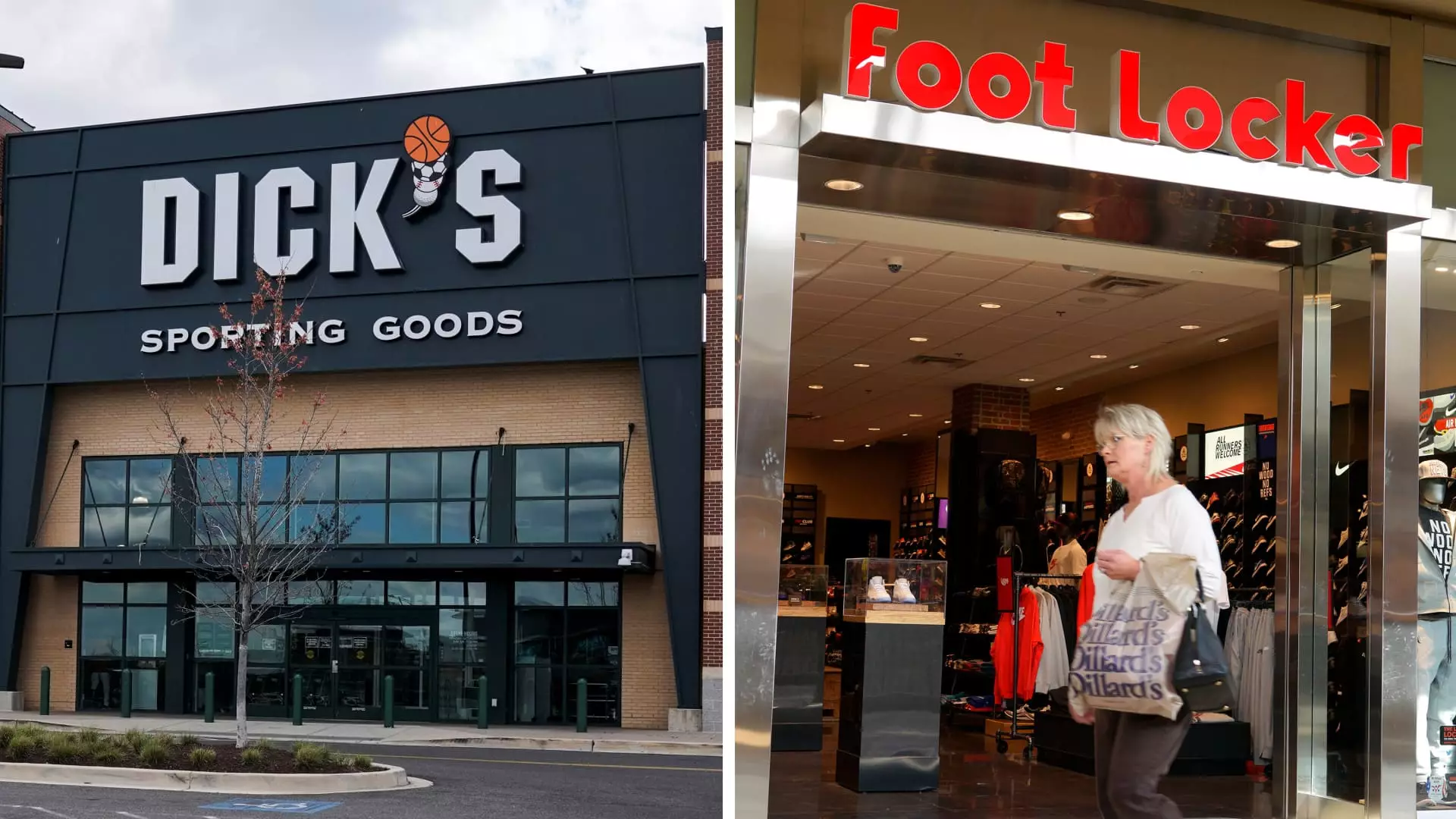The recent announcement of Dick’s Sporting Goods acquiring Foot Locker raises eyebrows across the retail sector. Intended to bolster Dick’s international footprint and assert dominance in the competitive sneaker market, the $2.4 billion acquisition seems like a bold move aimed at marrying two titans of sports retailing. However, such ambition comes with its own set of risks, particularly as the sports retail sector grapples with shifting paradigms in consumer behavior and economic conditions.
While CEO Lauren Hobart welcomes this new endeavor as a step towards capturing a more diverse customer base, the acquisition is far from a surefire strategy. The allure of an expanded market share often blurs the operational challenges that lie beneath, particularly when merging two distinct corporate cultures and consumer bases.
The Financial Realities of Foot Locker
Foot Locker’s current financial struggles cannot be overlooked. Its shares have plummeted 41% in the past year, marked by disappointing sales, particularly from its mall locations that are notoriously vulnerable during economic downturns. With a customer demographic leaning towards younger, lower-income individuals, the question remains whether Dick’s can effectively reinvigorate this segment while introducing its more affluent, suburban clientele.
Dick’s apparent optimism assumes that they can seamlessly integrate Foot Locker’s operations without missing a beat. Yet this situation is fraught with uncertainty. Foot Locker’s challenges are not merely isolated incidents but indicators of a broader issue within the retail ecosystem, leading many to question the wisdom of such a merger.
Synergy or Shortfall?
While executives on both sides are calling this acquisition a means of achieving “synergies,” financial analysts are skeptical. With TD Cowen pointing to historical data that reveals a lack of success in retail M&A, suggesting that such deals more often destroy shareholder value rather than create it, the apparent disconnect between corporate ambition and real-world outcomes becomes starkly evident. The estimated $100 to $125 million in cost synergies forecasted by Dick’s may prove overly optimistic given the current struggles Foot Locker faces in streamlining its operations.
Analyst John Kernan’s concerns reflect a reality that cannot be ignored – if the merger fails to yield expected benefits, Dick’s risks inflicting long-term damage not only on its balance sheet but also on its brand reputation.
Consumer Perception: A Critical Factor
One cannot underestimate the impact that consumer perception holds in retail environments. Dick’s emphasizes that it will allow Foot Locker to operate as a distinct brand, with Jennifer Hobart emphasizing that customers might not even recognize the connection between the two entities. What they fail to consider is that consumers are increasingly loyal to brands that resonate with their identity, and diluting the brand ethos of Foot Locker could alienate its dedicated following.
As brands continue to cater to diverse market segments, understanding the consumer psyche remains paramount. The Foot Locker brand evolved in an environment rich with sneaker culture, a nuance that may get lost in the larger Dick’s umbrella.
The Risks of an Unfavorable Regulatory Landscape
In addition to consumer sentiment, regulatory scrutiny also looms large over this acquisition. Although Dick’s states they do not anticipate regulatory hurdles with the merger, history has shown that antitrust laws can introduce roadblocks, especially when larger entities consolidate power. While some analysts see an opportunity for favorable regulatory conditions given the current administration, it would be foolish to dismiss the potential for backlash that could derail the deal or impose operational limitations, adversely affecting future growth prospects.
The Long Game: A Need for Caution
Returning to Dick’s rationale for acquiring Foot Locker, one has to wonder if this represents a hasty decision fueled by the urgency to compete in a rapidly shifting marketplace. If not executed with caution, the merger risks becoming a cautionary tale in retail history—illustrating that no amount of ambition can disguise fundamental misalignments in vision, consumer loyalty, and market dynamics.
Feeling the ground shift beneath their feet, Dick’s should tread cautiously as they embark on this ambitious venture. Greed and ambition can be powerful motivators, but they can also cloud judgment, leading investors down a treacherous path. Instead of rushing to harness immediate gains, companies in the retail space need to focus on long-term strategies that prioritize brand sanctity and consumer satisfaction.
In a sector that witnesses constant change, both Dick’s and Foot Locker must remain vigilant about understanding who their customers really are and what they want, lest they stumble into the pitfalls of corporate predatoriness. In the quest to capture market share, the potential for catastrophic misjudgments should not be underestimated.

